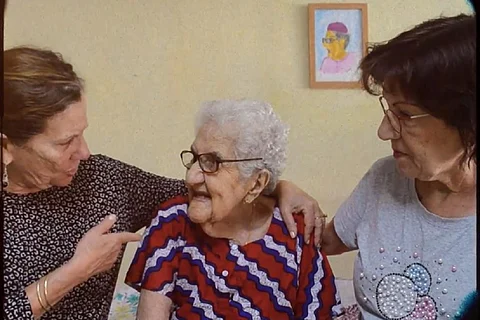

On trains, aboard metros, and inside rickshaws, Sanu Kummil sits with a bag on his lap and a cloud of thoughts about his motherland and its people. A journalist and documentary filmmaker, he has, within days, rushed to spots where he could record snippets of little known stories of communal harmony, beautifully shaped by the people of Kerala. Feeling an urgent need to counter the negative narratives in The Kerala Story, a Hindi film that many critics called a propaganda against the state and against Muslims in India, Sanu made his newest documentary in haste, calling it The Unknown Kerala Stories.
There is soft music in the background as the men and women of his stories speak. And you realise, punchlines need not come from a star on the screen. They can come from the most ordinary people airing their thoughts. It is only humane to bury a living being that died, be it animal or human, says Jalaludheen of Kaipatta in Malappuram, who allowed 19 of the poorest to be buried on his land when they had nowhere else to go. Another time, a few right-wingers were irked when he owned a piece of land that had a temple on it. The 79-year-old told them, “If the lamp at the temple will not be lit because a Muslim owns the land, I will write the place out to you.”
Sanu moves from Malappuram in the north of Kerala down to Thrissur to visit a Muslim school that teaches Sanskrit, and then to Mattancherry in Ernakulam where a Muslim man called Thaha Ibrahim famously cared for the last Jew of Jew Town, Sarah Cohen. The principal of the Muslim school – Academy of Shari’a and Advanced Studies in Shakthan Nagar – says that teaching Sanskrit would help reduce social rivalry and let the students learn more about other communities. Humanity, he says, is preached in every religion.
The camera then moves to the Sanskrit teacher – the elderly Yatheendran Master with sandalwood paste on his forehead – telling a class of boys wearing the white taqiyah (skullcaps) about humanity. It is a beautiful sight when he simply writes on the white board ‘manushyathvam’ – meaning humanity – and underlines it.
In Mattancherry, it is Thaha who warms your heart with his account of the Cohen couple taking him in when he was just a boy who came to do business for his uncle in their town. “People were surprised to see this Jewish couple taking an interest in a Muslim boy. They think that these two communities don’t get along well. It is not true. There are synagogues sitting next to mosques. I learnt about the world by listening to the Cohens talk, not from any book.” And that had taught him to hold Sarah’s hand till the end of her life, rushing to be by her side on the Friday that she died four years ago.
From Ernakulam, Sanu found another story near the Periyar River. A 76-year-old woman called Bharathiyamma has been taking care of a mosque – Hira Masjid – for 20 years. Another punchline flows from the old woman: “This has nothing to do with caste and religion, I believe in all of them, and I will come here and do the work at the mosque as long as I can walk.”
Down south in Thiruvananthapuram, the last leg of his tour, Sanu zeroed in on a story of humanity and another of communal harmony. Priyanka Nandha’s decision to donate her liver to Rajalal, the CPI(M) area secretary in Enikkara, someone totally unrelated to her, had surprised everyone around her. “During the days of COVID-19, we saw how people in Kerala offered their land to families to bury their dead when they didn’t have anywhere to go. That is the story of Kerala, such things happen here like nowhere else,” she says with a straight face. No drama there.
Sanu Kummil
In Palode too, Sanu observes a similar sentiment when he stops at Elavupalam, where an arch bears the marks of three religious institutions. On the left is the name of the Darul Islam Juma Masjid, on the right is the name of Kallumala Thamburan Devi Temple, and in the middle is a small space bearing a cross representing the one Christian family that lives in the area. The rest of the area is dominated by Muslims and Hindus who have been living in harmony for many years, without considering it a big deal, and happy to observe the arch rebuilt by the younger generation carrying on the tradition.